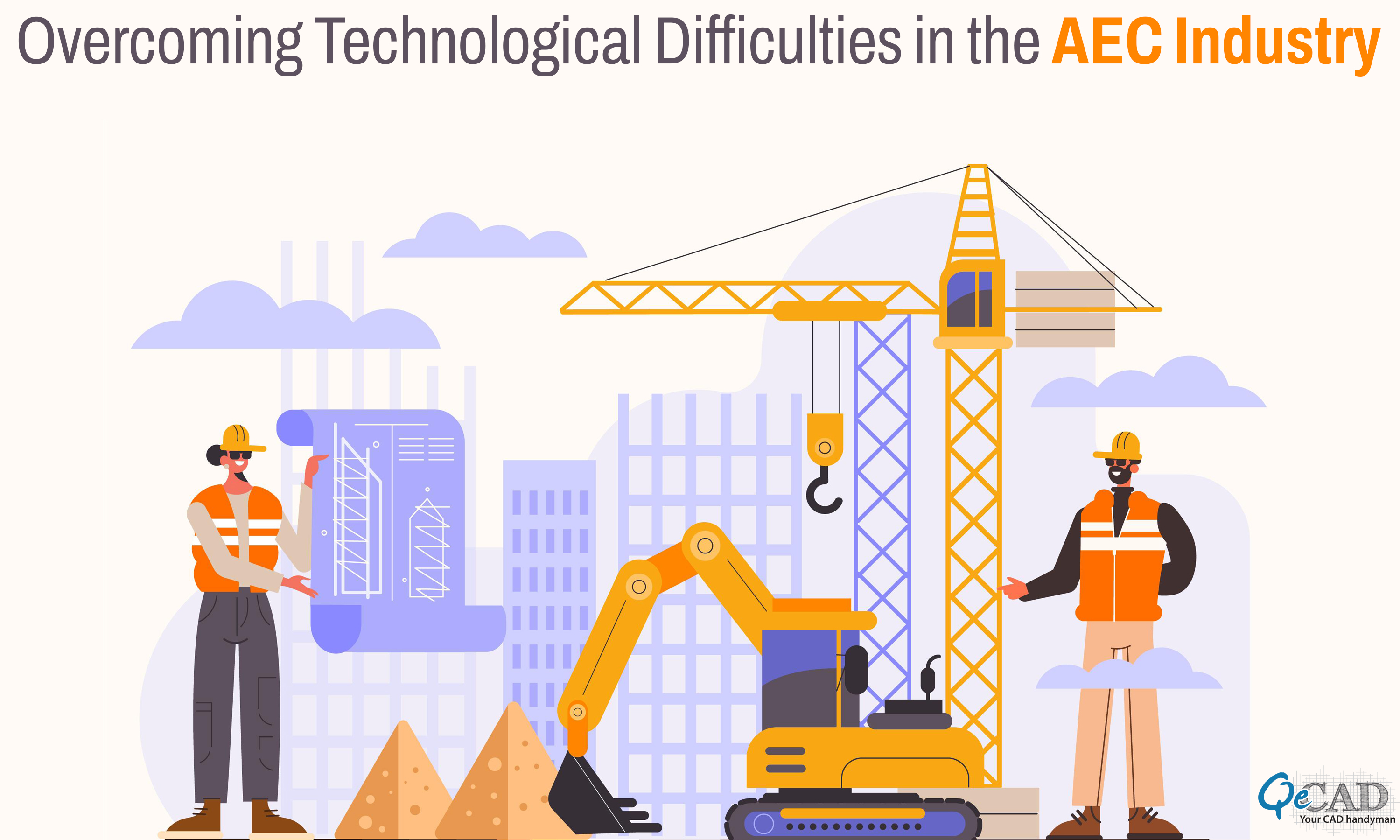
Introduction
Because of technological improvements, the Architecture, Engineering, and Construction (AEC) business is continually evolving. Notwithstanding the advantages of these advances, numerous AEC firms confront substantial obstacles in adjusting to new technologies. In the past few decades, the sector has undergone a substantial transition from manual procedures to digital ones. In contrast to other industries, acceptance of these technical breakthroughs has proven sluggish. Throughout the following article, we are going to look at a couple of the issues that AEC firms encounter when it comes to integrating technology innovations.
1. Transformation Resistance
Resistance to change represents one of the most critical issues that AEC firms confront while adapting to technology improvements. This has become a prevalent issue in many businesses since people are resistant to transformation, particularly whenever it pertains to emerging technological advancements. AEC firms do not constitute a single exception, since numerous personnel are accustomed to conventional procedures and might find it challenging to adjust to completely novel methodologies for accomplishing things. Furthermore, a few staff members might regard technological advances just like an imminent danger regarding their employment prospects, which results in resistance and skepticism to adopt the latest innovations.
2. Lack of comprehension
Another key issue that AEC firms confront is an abundance of knowledge regarding emerging technology of BIM Services. The majority of businesses are probably unaware of how this technology is employed or whatever advantages it might provide. Because of this misunderstanding, AEC firms may find it challenging to properly incorporate new technologies into their operations. To address this issue, businesses ought to participate in training programs that give personnel background information along with the abilities required for working with new technologies.
3. High Prices
It can be expensive for AEC firms, particularly those that are smaller, to adopt new technologies. Some businesses may be reluctant to make an investment in new technology because the cost of buying and installing it can be too high. Additionally, some businesses find it challenging to stay up with the most recent technological breakthroughs due to the expensive expense of sustaining and upgrading technological advancements. To address this issue, businesses should perform an analysis of costs and benefits to ascertain the long-term advantages of implementing new technologies.
4. Adaptation to Current Systems
AEC businesses frequently rely on a variety of pre-existing systems to carry out their activities. It may prove difficult and time-consuming to integrate cutting-edge technology into such old systems. It might not even be practicable in some circumstances to integrate new technologies with current structures. As a result, businesses may be reluctant to make investments in emerging technologies since they are afraid it will interfere with their current processes. Businesses ought to thoroughly assess their current systems like Drafting Services to identify those that can be merged with new technologies in order to address this difficulty.
5. Security Issues
Security issues are a key barrier for AEC organizations to adopt technological improvements. Data breaches and cyber dangers are becoming more and more likely as technology is used more frequently. AEC businesses are responsible for making arrangements to ensure their computer networks have been safe and secure from threats. As the technological landscape continues to evolve and novel dangers emerge on a regular basis, that may prove difficult. Businesses ought to make investments in strong security infrastructure and procedures to safeguard the information in their possession in order to successfully navigate this difficulty.
6. Absence of Standards
Last but not least, whenever it pertains to cutting-edge technological advances, AEC firms struggle with a dearth of standardization. It might be difficult to decide which advancements have been the most useful while deciding which technologies ought to be embraced because there may be numerous distinct kinds of technology accessible. Whenever it pertains to the adoption and usage of cutting-edge technology, there is frequently an absence of standardization, which results in irregularities and bottlenecks in processes. Businesses ought to formulate guidelines for the usage of new technologies in the AEC sector in collaboration with professional organizations as well as regulatory organizations in order to address this difficulty.
7. Insufficient Skilled Workforce
There is a lack of skilled workers in the AEC sector, notably in the technological field. People who can manage and implement new technologies are needed in the sector. Unfavorably there is a shortage of highly qualified employees compared to the demand. Finding skilled employees who can successfully integrate and manage the latest technology is frequently a challenge for AEC organizations.
8. Industry’s Fragmented Nature
Many different stakeholders, including architects, engineers, vendors, subcontractors, and vendors, make up the convoluted and dispersed AEC sector. Implementing new technology is difficult because of the industry’s fragmentation and all parties involved must accept the changes. The adoption of new technologies may be hampered by a lack of cooperation and integration among stakeholders.
Conclusion
In summary, it is difficult for the AEC sector to keep up with technological changes. These difficulties revolve around apprehension about modifications, ignorance, costs that are high, interoperability with current structures, problems with safety, insufficiently skilled workforce, fragmented nature of the industry as well as the absence of standardization. Businesses ought to make investments in educational programs, cost-benefit assessments, in-depth system evaluations, and surveillance systems, as well as collaborate alongside business organizations along with regulatory organizations to set guidelines in order to address these kinds of problems.
